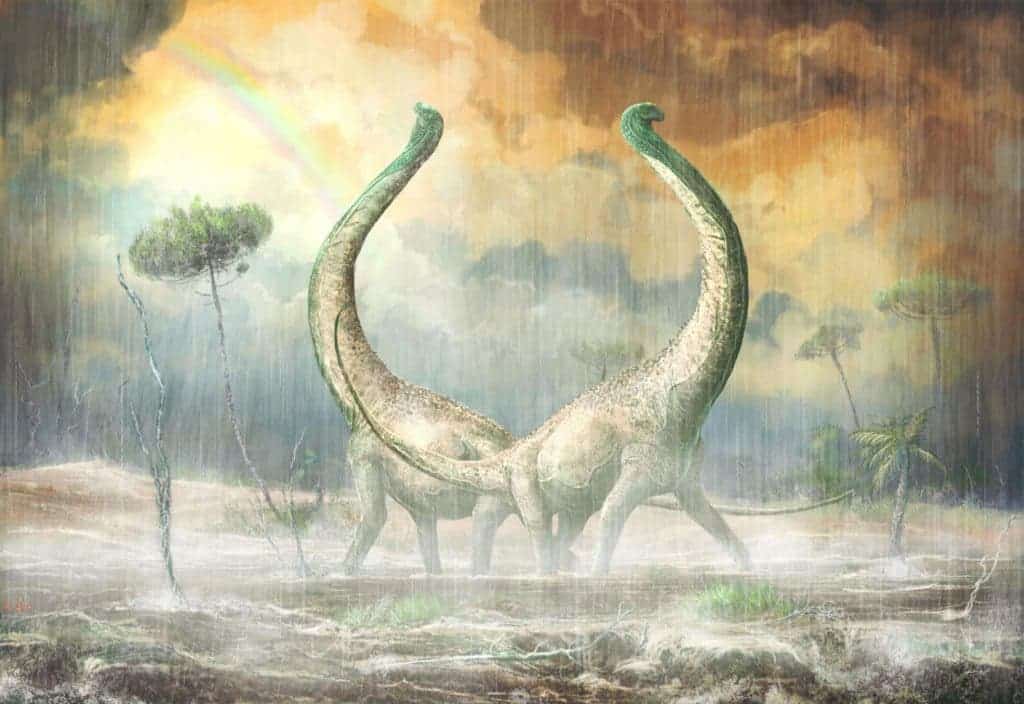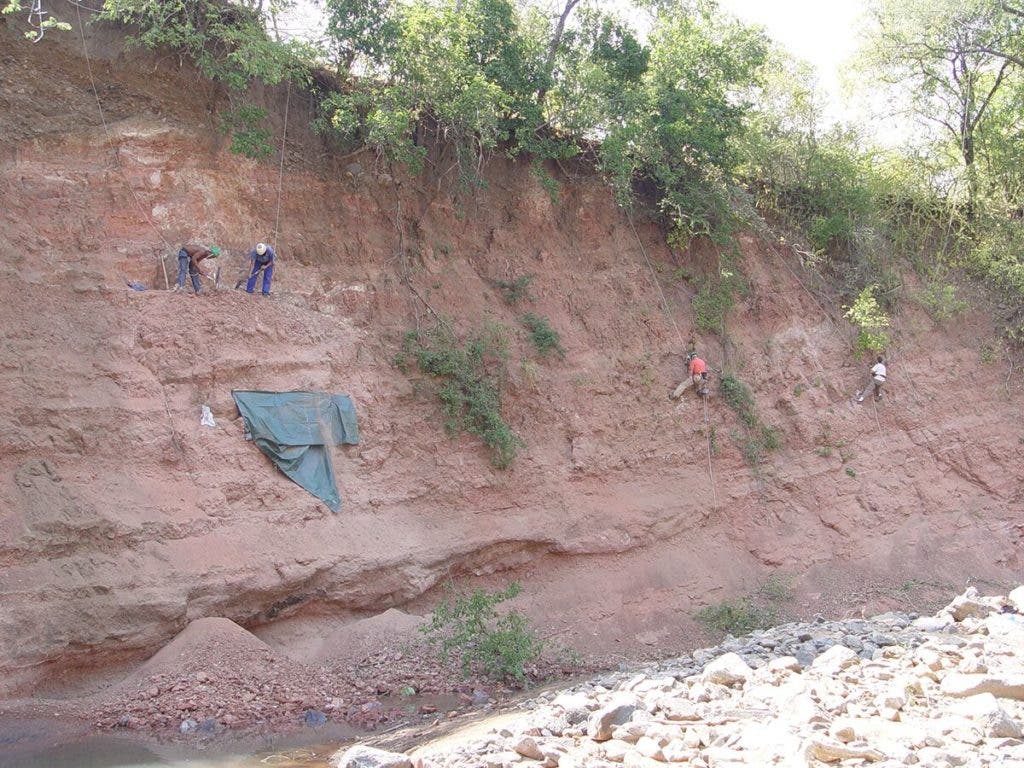Titanosaurs belonged to a group of dinosaurs called sauropods — the largest terrestrial creatures that ever roamed the Earth. But while most sauropods disappeared during the Late Cretaceous 100 million years ago, Titanosaurs thrived during that period. However, the early evolution of this group is not that well known because not many fossils have been discovered.

This is where Mnyamawamtuka moyowamkia comes in. Its name is derived from Swahili for “animal of the Mtuka (with) a heart-shaped tail”, in reference to the name of the riverbed (Mtuka) in which it was discovered and due to the unique heart-shape of its tail bones. Mnyamawamtuka was first discovered in 2004 when parts of its skeleton were found high in a cliff wall overlooking the seasonally dry Mtuka riverbed in Tanzania. Excavations continued, at times requiring extreme dedication: often, the digging team was suspended by ropes or climbing gear over the wall. If the digging would have been delayed even by just a few years, erosion might have destroyed much of this skeleton.

Researchers note that the finding is particularly important as it provides a much-needed puzzle piece in understanding Titanosaur evolution, as well as the general evolution of African fauna during the Cretaceous.
“Although titanosaurs became one of the most successful dinosaur groups before the infamous mass extinction capping the Age of Dinosaurs, their early evolutionary history remains obscure, and Mnyamawamtuka helps tell those beginnings, especially for their African-side of the story,” said lead author Dr. Eric Gorscak. “The wealth of information from the skeleton indicates it was distantly related to other known African titanosaurs, except for some interesting similarities with another dinosaur, Malawisaurus, from just across the Tanzania-Malawi border,” noted Dr. Gorscak.

This isn’t the only important finding from the area. Among others, researchers have found evidence of two other titanosaurs (Shingopana songwensis and Rukwatitan bisepultus), a mammal-like crocodile (Pakasuchus kapilimai), evidence of the monkey-ape split, as well as early evidence of insect farming.
This new find also suggests a close relationship titanosaurs from Africa and South America — two continents which were joined together 180 million years ago.
“This new dinosaur gives us important information about African fauna during a time of evolutionary change,” said Judy Skog, a program director in the National Science Foundation’s Division of Earth Sciences, which funded the research. “The discovery offers insights into paleogeography during the Cretaceous. It’s also timely information about an animal with heart-shaped tail bones during this week of Valentine’s Day.”
Journal Reference: Gorscak E, O’Connor PM (2019) A new African Titanosaurian Sauropod Dinosaur from the middle Cretaceous Galula Formation (Mtuka Member), Rukwa Rift Basin, Southwestern Tanzania. PLoS ONE 14(2): e0211412. https:/






